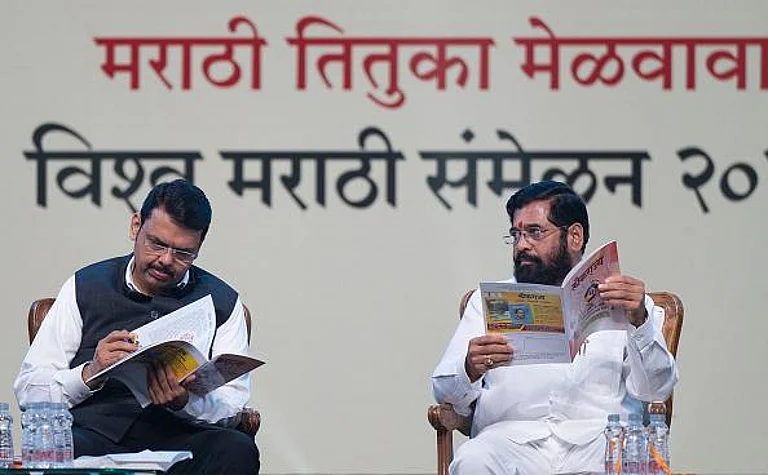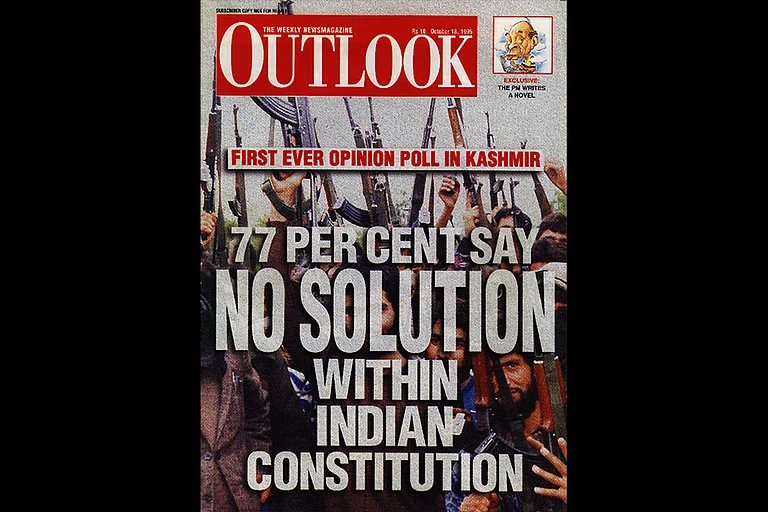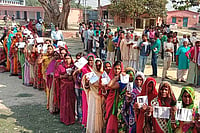This article was published in the Outlook magazine issue 'One Nation, One Election/One Nation, Many People' dated October 1, 2023. To read more article from the issue, click here.
The concept of holding simultaneous elections for both the Union and all the states in India has been a recurring topic of discussion and debate. In recent years, this idea has gained traction, with various stakeholders expressing their views on its feasibility as well as its potential benefits and drawbacks.
History of ‘One Election’
The notion of simultaneous elections was formally proposed by the Election Commission (EC) of India in its 1983 report. The Law Commission also recommended simultaneous elections to the Lok Sabha, Vidhan Sabhas and local bodies as early as in 1999, and reiterated this recommendation in 2018 underlining the constitutional implications. Senior Bharatiya Janata Party (BJP) leader L K Advani voiced his support for this idea in 2010, underscoring its usefulness. The matter underwent scrutiny by a Parliamentary standing committee in December 2015 which referred to the EC’s comments, while supporting the proposal in principle. In 2017, the Niti Aayog released a paper titled ‘Election Time Table’, suggesting a via media of two elections in five years. But this amounts to a major dilution of the original proposal of simultaneous elections at all three tiers.
Significant Concerns
The discussion surrounding simultaneous elections raises several valid concerns that warrant serious consideration. One of the most prominent issues is the escalating cost associated with electoral contests. The 2019 general election in India set a new record for being the most expensive in history, with an expenditure of approximately Rs 60,000 crore. Moreover, the frequent recurrence of elections disrupts the normal functioning of the government and civic life. The activation of the Model Code of Conduct (MCC) as soon as the EC announces election dates leads to a ‘policy paralysis’. This criticism is not correct. The MCC doesn’t stop anything except new appointments or transferring officials during this period.
Surprisingly, what none of these committees have pointed out is the more serious impact of frequent elections on the social fabric of the nation. Communalism, casteism, and corruption tend to peak during electoral season, perpetuating their corrosive influence on the country’s polity and society. This divisive environment was particularly evident during the 2019 general election, exacerbating societal divisions and discord. Divisive and polarising campaigns have become the winning strategy for some.
For the EC, the concept simplifies the logistics and resource allocation required for conducting elections, streamlining the entire process, except that electronic voting machine (EVM) requirement will be three times more. Apart from the existing 20 lakh machines, they will need 40 lakh more. This will take 3–4 years to manufacture. Besides, 20–30 lakh more manpower will be required—all government servants as mandated by law. There is already a shortage of government servants in this area.
There are significant challenges associated with implementing simultaneous elections. In a diverse country like India, where each state follows its own political course, federalism is the key concern. Situations like a shift in majority due to MLAs changing allegiances or the premature dissolution of the Lok Sabha pose practical challenges to the ‘one nation, one election’ concept. Constitutional amendments and statutory law changes would also be necessary, requiring political consensus across both Houses of Parliament and state consent. Fortunately, the prime minister has been emphasising the need for consensus.
Moreover, frequent elections, while being a little disruptive, serve a purpose in ensuring accountability. Politicians are often criticised for disappearing once an election is over, and frequent elections force them to remain visible to the public. It also generates job opportunities at the grassroots level. Finally, it prevents the mixing of local, regional and national issues.
The implementation of One Nation, One Election (ONOE) is expected to exert a profound influence on voter behaviour, introducing a significant predisposition towards casting votes for the same political party at both the national and state levels. An academic study conducted by the University of Pennsylvania’s Center for the Advanced Study of India in 2020, titled ‘Behavioral Voters in a Decentralized Democracy’ authored by Sabyasachi Das, Apurav Yash Bhatiya and Vimal Balasubramanian, empirically demonstrates that in simultaneous elections, voters tend to prioritise heuristics such as party affiliation over the individual characteristics of candidates. Remarkably, this research establishes that the likelihood of a candidate securing victory in both the Lok Sabha and Assembly elections increases by approximately 21 per cent. An earlier study by IDFC Institute analysed the voting behaviour of 513 million voters between 1999 and 2014. It found that 77 per cent people voted for the same party (national party) while this per cent dropped to 61 per cent when the elections were nearly six months apart.
Obviously, the adoption of ONOE leads to the mixing of national and state-level issues, a development that neither serves the best interests of the electorate nor aligns harmoniously with India’s federal structure.
Local political parties often find themselves in a disadvantaged position when competing against well-funded national counterparts during concurrent elections. To illustrate, the BJP amassed a staggering sum of Rs 5,271.97 crore in political contributions between 2016–17 and 2021–22, a figure five times greater than the combined total of all other national parties, facilitated through the issuance of electoral bonds. In the fiscal year 2021–22, the cumulative income of 36 regional parties amounted to a mere 64 per cent of the BJP’s financial resources.
Alternative Suggestions
In the absence of political consensus on simultaneous elections, two alternative suggestions can be considered. First, controlling campaign expenditure by introducing expenditure caps on political parties, the main reason for excessive expenditure. A ceiling should be imposed on the candidates as well. This will bring down expenditure drastically. Second, reducing the poll duration to about 33 to 35 days with the increased presence of Central armed police forces could eliminate issues associated with multi-phased elections such as violence, social media-related transgressions and MCC enforcement.
While the proposal for simultaneous elections in India has gained attention and support from various quarters, it is not without its challenges and concerns. Implementing such a significant change in the electoral system would require careful deliberation, broad consensus and meticulous planning to ensure its successful execution while preserving the essence of democracy and the integrity of the electoral process.
(Views expressed are personal)
(This appeared in the print as 'The Federalism Question')
S Y Quraishi is the author of An Undocumented Wonder and India’s Experiment with Democracy


























